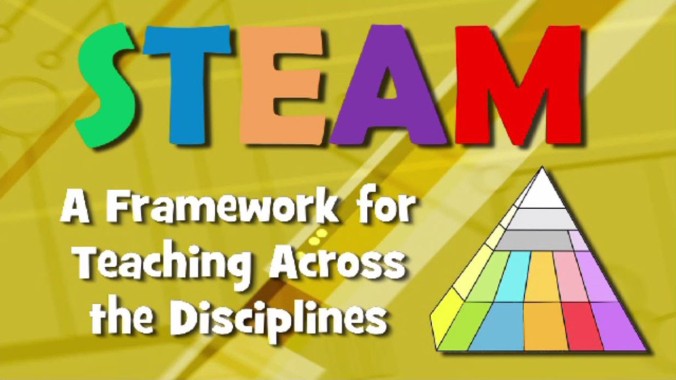
STEM was formerly a curriculum based on the concept of educating students in four specific disciplines — science, technology, engineering, and mathematics.
John Maeda, former president of the Rhode Island School of Design, championed the STEM to STEAM movement, campaigning to add “arts” to STEM, bringing the initiative to the forefront. His argument was that “design thinking and creativity are essential ingredients for innovation.”
Rather than teach each discipline as separate and discrete subject, STEM/STEAM emphasizes technology to connect the subjects and integrate them into a cohesive learning experience based on real-world applications.
The blended learning environment shows students how this method can be applied to everyday life. It teaches students computational thinking and focuses on the real-world applications of problem solving.
Examples of real-world applications of problem solving outlined by ProjectPals.com include:
Grade Schoolers:
- Wildlife Organization Projects
- Growing Plants
- Build a Robot
High Schoolers:
- Video Game Physics
- Zombie Survival
- Investigate a Real-World Problem (e.g. climate change/cleaning up an oil spill)
According to Education Week, working on these issues solutions to real-world issues/problems is the heart of any STEM investigation. These solutions may include devices and designs that improve our lives, fulfill our needs or wants, and make our world better. From designing a better pen to figuring out how to assist areas lacking access to clean drinking water, the opportunity to search for solutions to real-world problems fuels students’ curiosity and sparks their investigative interests.
Perhaps the most important consequence of students working on real problems is that they begin to develop empathy—a sense that there is something worth dedicating their efforts to outside of themselves.”
According to a report by the website STEMconnector.org, a 2018 projection estimated the need for 8.65 million workers in STEM-related jobs.
[The report indicated the field of cloud computing alone will have created 1.7 million jobs between 2011 and 2015.]
The U.S. Bureau of Labor Statistics projected that by 2018, the bulk of STEM careers will be:
- Computing – 71 percent
- Traditional Engineering – 16 percent
- Physical sciences – 7 percent
- Life sciences – 4 percent
- Mathematics – 2 percent
Students studying science or math in college have a higher employment rate and salary than other majors after graduation, according to a new report from the Department of Education.
The DOE report looked at four years of data on college graduates and found that STEM majors — science, technology, engineering, and math — on average earn $65,000, while non-STEM majors earned about $15,500 less. STEM majors were also more likely to be employed and hold only one full-time job, rather than a part-time job or multiple jobs.
According to the DOE survey, engineering and engineering technology was the highest paying degree, with an average annual salary of $73,700.

Chemical Engineer – Annual Salary $ 122,000
Pingback: Do You Know What’s Happening With Mathematics in Florida and Indian River County? | Vero Communiqué